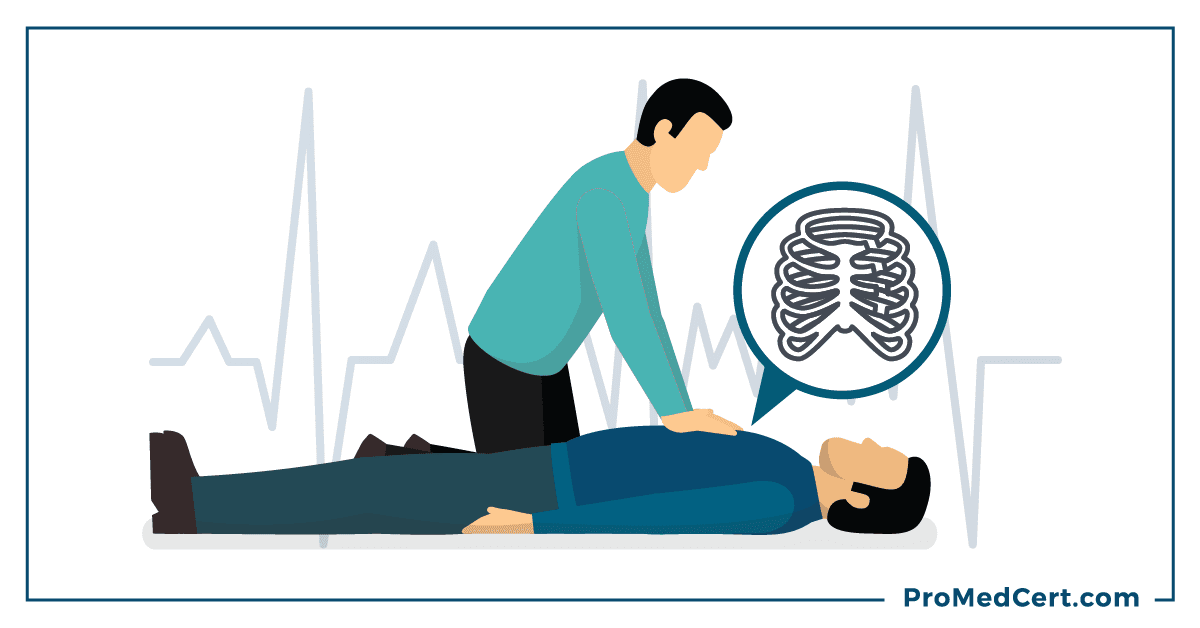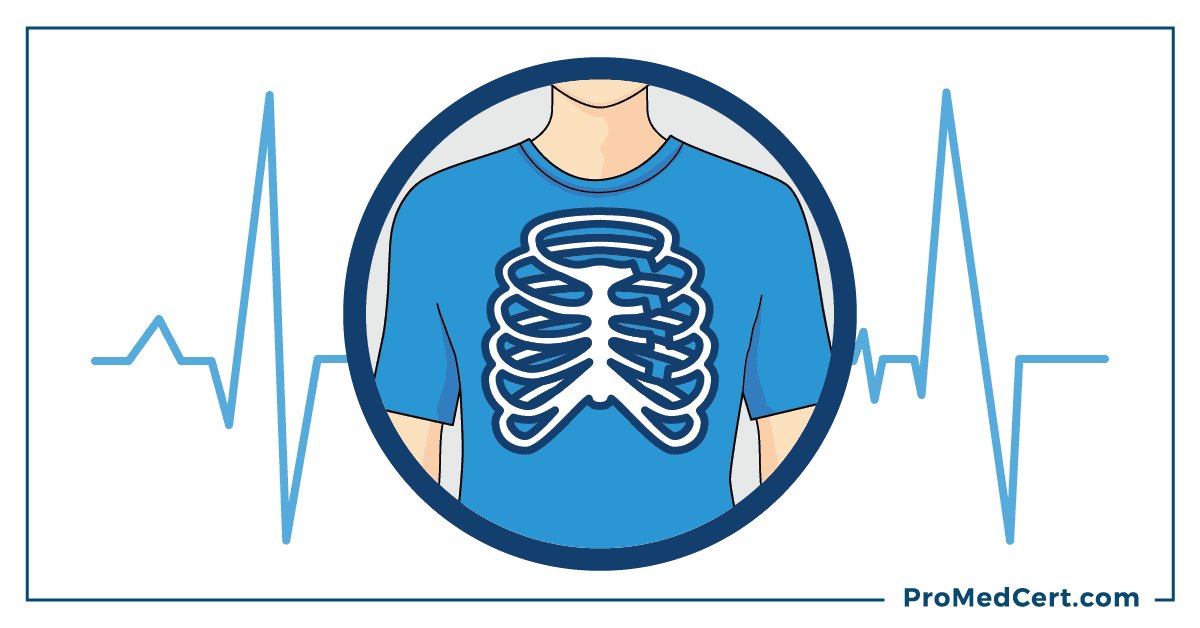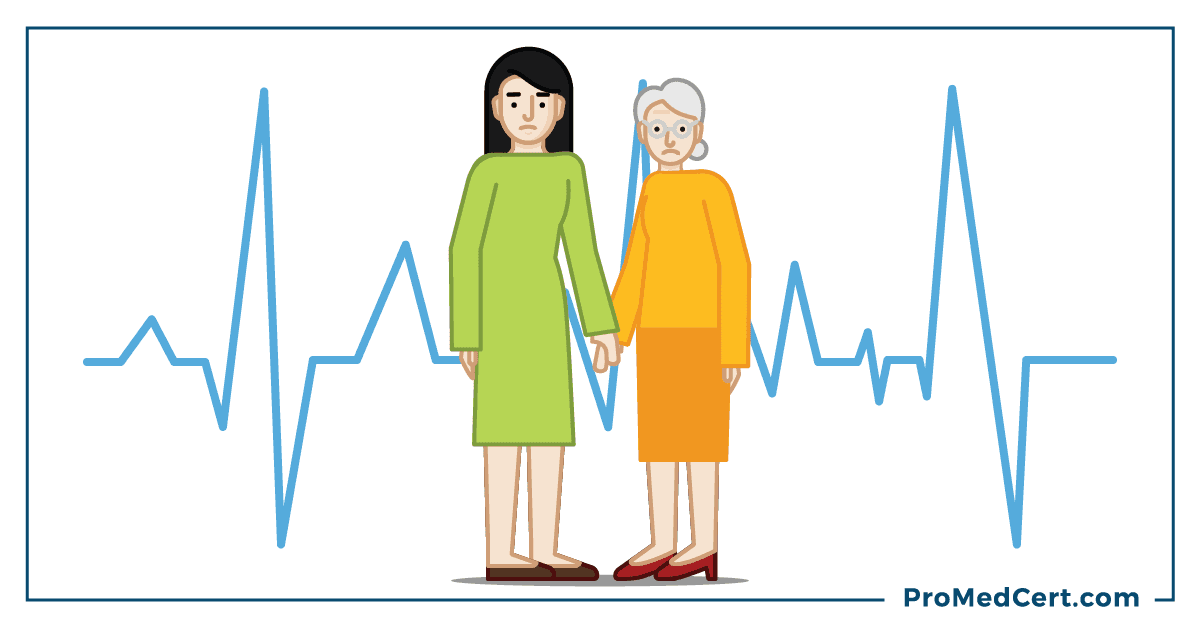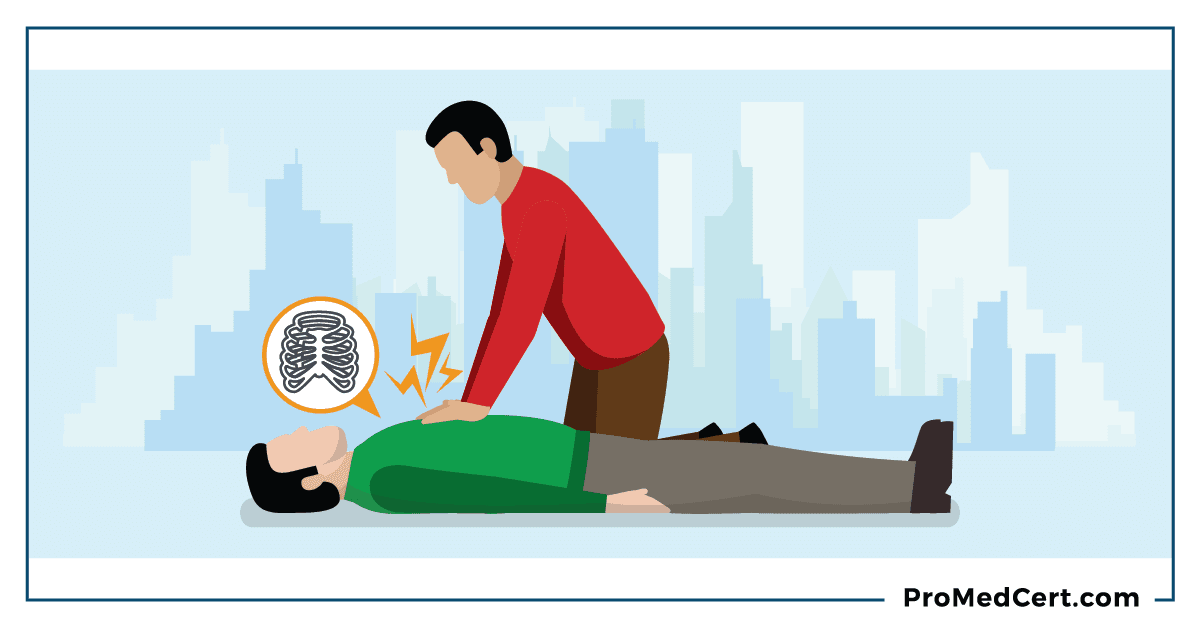Does CPR Break Ribs?
The reality is that injury during CPR isn’t all that uncommon. In fact, a significant portion of those who receive CPR end up with broken ribs or other bones as a result. Here's what to expect.

It’s one thing to become certified in CPR. It’s an entirely different thing to apply those skills to a real-life situation.
One of the biggest concerns that come with performing CPR for the first time on an actual person is whether or not you will accidentally cause physical injury to their body. Does CPR break ribs? Will you be causing more harm than good?
After all, you are applying great pressure to the rib area while performing the necessary chest compressions. What if you hear a telltale crack in the process?
The reality is that injury during CPR isn’t all that uncommon.
In fact, a significant portion of those who receive CPR end up with broken ribs or other bones as a result.
In other words, it’s somewhat par for the course.
Because of the risk of breaking ribs, many students learning CPR are hesitant to carry it out. Some lack confidence, while others are genuinely concerned - what if performing CPR does actually break their ribs?
If you’re currently struggling and feeling intimidated by the risks associated with performing CPR, this article may be helpful for you.
Exactly How Common Are Broken Ribs During CPR?

For CPR to be effective (in adult patients), chest compressions need to be performed at a depth of approximately 2 inches. Any more shallow than that, and the blood will not be moved around the body sufficiently.
However, compressing the human chest by that much requires a significant amount of force – up to about sixty pounds. Given this amount of force, it’s easy to understand how and why a rescuer might end up breaking ribs while performing CPR.
The consensus has held that CPR does break ribs in approximately 30% of patients receiving it. However, according to a 2015 study published in Resuscitation, those numbers may actually be considerably higher.
The study analyzed autopsy data from more than 2,000 patients who had received CPR for cardiac arrest not caused by trauma. What they found was that:
- 86% of men and 91% of women presented with skeletal chest injuries
- 59% of those men and 79% of those women had fractures of the sternum
- 77% of those men and 85% of those women had fractures of the ribs
- 33% of those men and 12% of those women had sternocostal separation
As you can see, while it’s a common first aid myth that wrong CPR can be deadly, it does indeed break ribs in a significant portion of patients.
So, chances are pretty high that if and when you perform resuscitation on a patient, some type of injury may occur.
Who is Most at Risk of Fracturing or Breaking Ribs During CPR?

The data provided from the above-referenced study makes it clear that of the two genders, women are more likely than men to experience chest injuries during CPR.
Additionally, the study also found that CPR does break ribs in older patients than those who are younger.
Furthermore, the presence of certain existing health conditions, such as osteoporosis, which causes a weakening of the bones, can also increase the risk of skeletal injury.
Conversely, physically large patients – particularly those who are obese – are much less likely to suffer broken ribs due to CPR than those with smaller frames.
Another study performed in Korea revealed that patients receiving CPR from a bystander are more likely to suffer chest injuries than individuals who receive CPR from a trained professional, such as a doctor, a paramedic, or someone who works in a place that needs CPR training.
So, the good news is that if you are educated on how to correctly deliver effective chest compressions, your risk of injuring someone and breaking their ribs during CPR does decrease.
The risk of injury also rises based on the size and strength of the individual performing CPR. Generally speaking, men are at a higher risk of breaking ribs during CPR because they tend to have more upper body strength than women. Of course, this is not always the case.
What Should You Do if You Hear (or Feel) a Bone Crack?

If you’re performing CPR and it does break the person’s ribs, you may hear a cracking sound. At the very least, you’ll probably feel something crack or give way under your hands.
This is not always indicative of an actual break, however. The initial sound or feeling of cracking can often be attributed to the cartilage in the ribs or sternum breaking, as opposed to the ribs themselves.
In any case, it’s not advisable to stop performing CPR, even if you hear a cracking sound or think you feel a rib break.
While it’s true that broken ribs from CPR can be painful and may extend a person’s recovery time, ceasing resuscitation efforts could result in far worse – death in particular.
It is incredibly unlikely that the life-saving CPR you perform, even if it does break ribs, upsets someone. Instead, they will probably be grateful to be alive, thanks to the resuscitator’s quick and proper response.
Don’t Let Fear Stand in Your Way
There have been a lot of broken bones in the history of cardiopulmonary resuscitation. One of the most crucial components of CPR is that you should never allow fear of breaking someone’s ribs during CPR or causing other injuries to stand in the way of life-saving efforts.
Broken bones heal, but death is forever.
Furthermore, most states have Good Samaritan laws that protect people who deliver first aid in good faith, even if CPR does break the patient’s ribs.
That means even in the unlikely event that someone were to try and sue, you would be protected. The fact is, CPR is a vigorous and sometimes brutal technique. As such, there will always be a risk that the person on the receiving end becomes injured in the process.
However, if the person you assist is lucky enough to survive their ordeal, you can expect a heartfelt thank you – broken ribs and all.
Get Your CPR Certification With ProMed
Now that you know that sometimes CPR does break ribs, you can get your certification and improve your first aid skills to give patients a better chance at survival with minimal fractures.
ProMed offers affordable online CPR courses. You can learn on your own time and contact us 24/7 for support. View our courses and get certified today!
Like this content? Want more? Get future posts delivered straight to your inbox. Subscribe today and never miss another post!

